Liguria, Italy, often referred to as the Italian Riviera, is a cornetto-shaped province in the country’s northern third. Its Mediterranean-lapped shores, colorful tower-house architecture, and plentiful sunshine have ensured a long primacy for Liguria as a summer vacation spot.
A region of salty focaccia bread and fragrant pesto, the province also comes with a history as flavorsome as the food. In the medieval era, the Genoese Republic was a power player, while in the 19th century, traveling English Romantic poets swooned over the region’s rugged charm.
While headline destinations such as Portofino, the Cinque Terre, or Santa Margherita draw the crowds, the province holds numerous treasures in its mountainous hinterland. Hilltop villages, considered some of the most beautiful in the country, await up wiggly country roads.
Why Visit Liguria, Italy
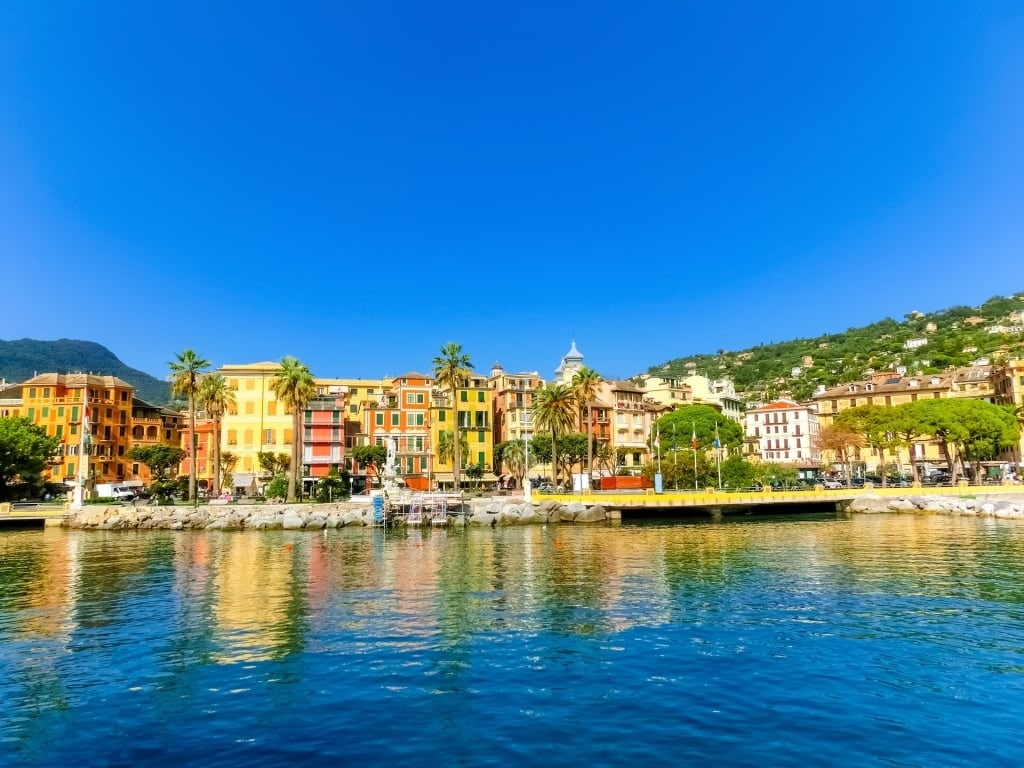
Santa Margherita
The charms of Liguria, Italy, are as obvious as its pastel architecture. Amid the narrow cobbled streets that wind between tall lemon-yellow, ochre, and lime-colored buildings, you’ll discover a laid-back, traditional way of life comfortably in step with the region’s long history as a vacation destination.
In the warmer months, regattas billow across the Gulf of Tigullio while sleek modern superyachts anchor off San Remo’s famous casino.
Hikers follow ancient, oak-shaded trails leading to sublime destinations such as the San Fruttuoso Monastery, while the seafront promenades of Santa Margherita or Alassio fill up quickly at aperitivo hour.
History & Culture
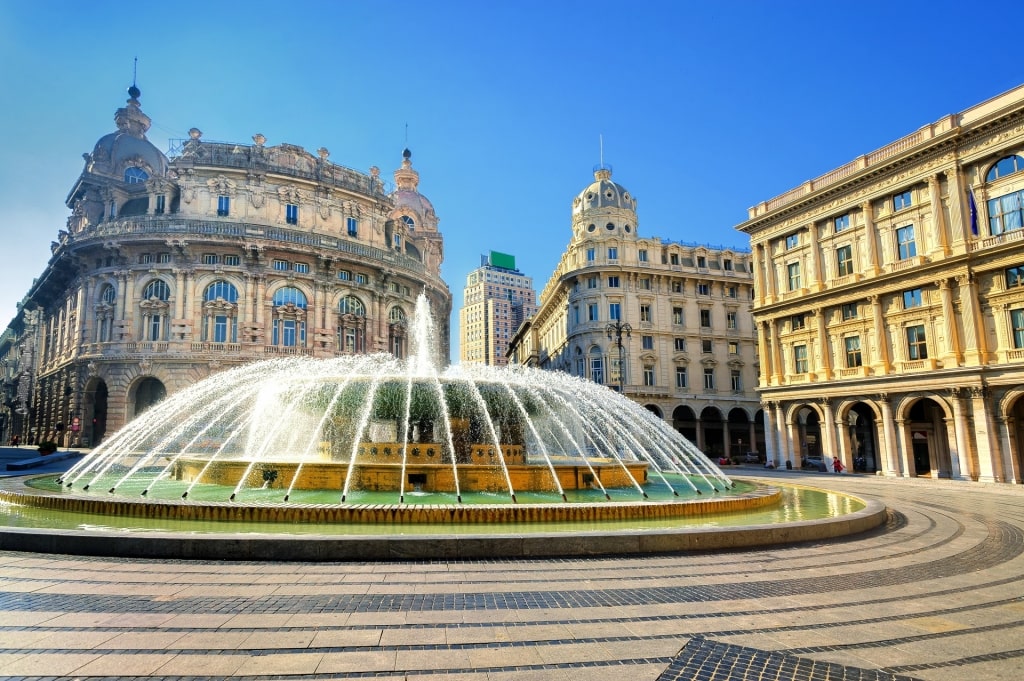
Genoa piazza
It hasn’t always been a world of sun-bleached languor and peach marble promenades in this part of the Mediterranean.
During the Middle Ages, invading tribes such as the Lombards swept down through the Alps, while the Ligurian beaches were more crowded with Saracen raiders than beach umbrellas.
With the rise of the Republic of Genoa in the 11th century, this region entered a relatively stable and profitable stage. Genoa was one of the so-called maritime republics, and its merchant fleet grew to become the Western Mediterranean’s chief commercial carrier.
The Republic of Genoa peaked in the 16th century, with control over its riches and influence a tug-of-war between parties including the King of France and the Duke of Milan.
An alliance with Spain settled the issue, and close ties greased the wheels for the Spanish crown’s support for the Genoese explorer, Christopher Columbus.
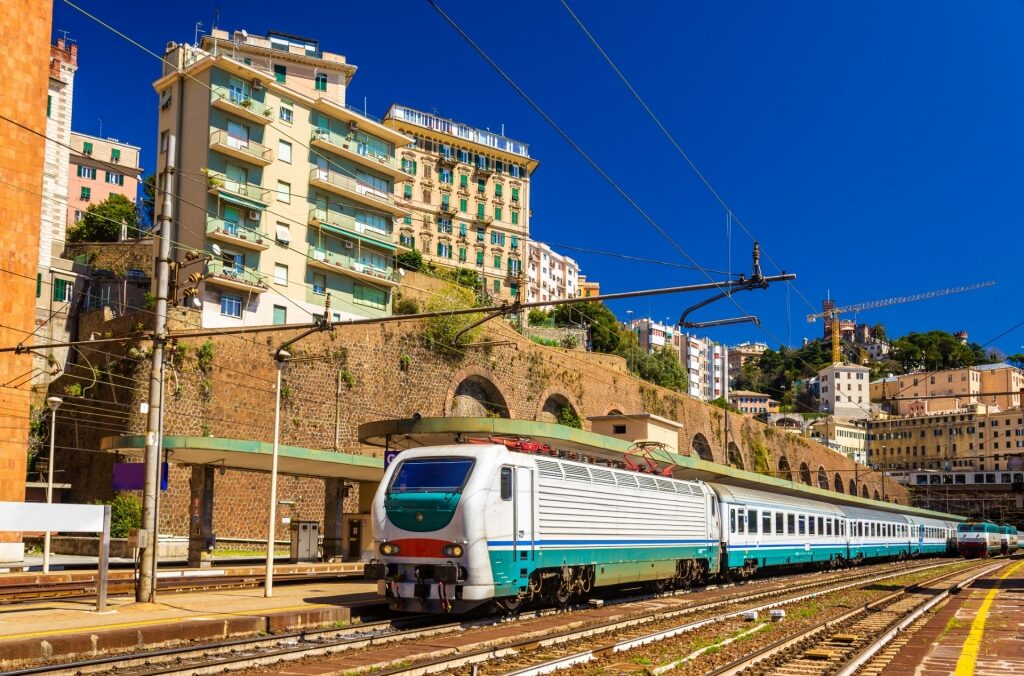
Genoa
By 1861, the province had become part of the newly formed Kingdom of Italy. With the arrival of the Pisa to Genoa train line, Liguria’s future as a tourism hotspot was assured. English, German, and Russian tourists arrived in droves at this arc of Mediterranean sunshine.
Among them were numerous celebrities. Hemingway checked into the Excelsior Palace in Rapallo, Byron swam across the Gulf of Spezia (helping to bestow its alternative name as the “Bay of Poets”), and Winston Churchill puffed on cigars on his balcony in Portofino.
Wildlife & Nature
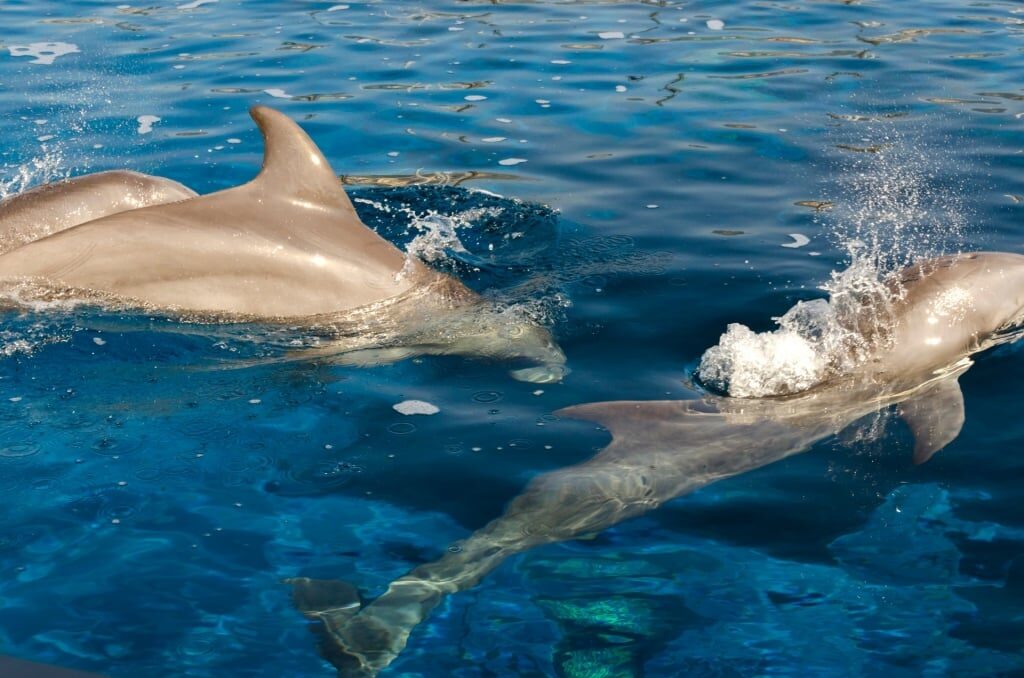
Bottlenose dolphins
With its extensive coastline, the wildlife interest in Liguria, Italy, is predominantly focused on the sea. Bottlenose dolphins breach by the bows of sailboats, while fin whales have taken up residence in the region’s protected waters.
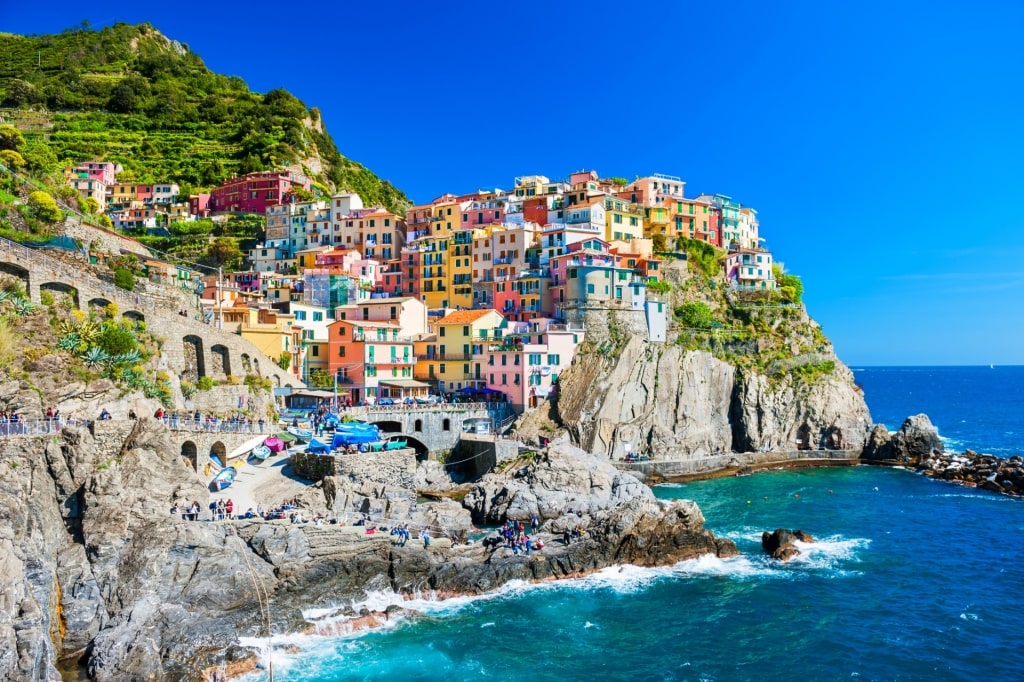
Manarola, Cinque Terre
The Cinque Terre is not only a series of stunning UNESCO-listed mountain villages, it’s also Italy’s smallest national park, and its first.
Among its protected residents are slow salamanders and lightning-quick peregrine falcons. Out to sea, a Protected Marine Area helps ensure the quality of the water for the marine life visitors wading into the warm waves.
Portofino enjoys a similar situation as the Cinque Terre. Catch a boat for a whale-watching trip off the Portofino Promontory, or dive into its protected seagrass meadows.
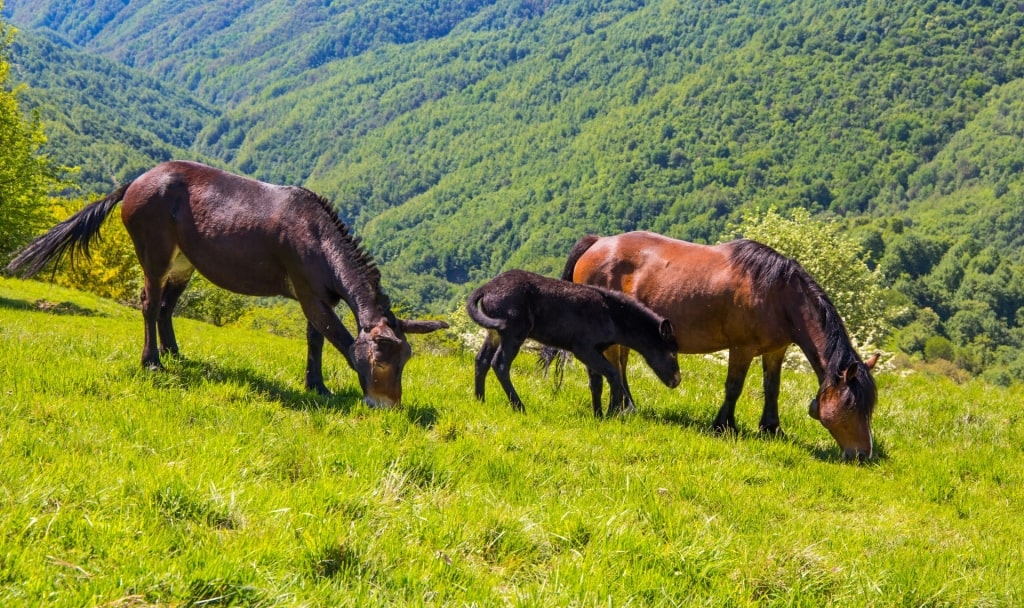
Regional Nature Park of the Ligurian Alps
In the region’s mountainous interior, you’ll typically find a nature reserve, crisscrossed with trails, not far from where you’re staying. One of particular note is the Regional Nature Park of the Ligurian Alps, where you can hike up into stunning alpine terrain and look over the border into neighboring Provence.
Tips for Visiting Liguria, Italy
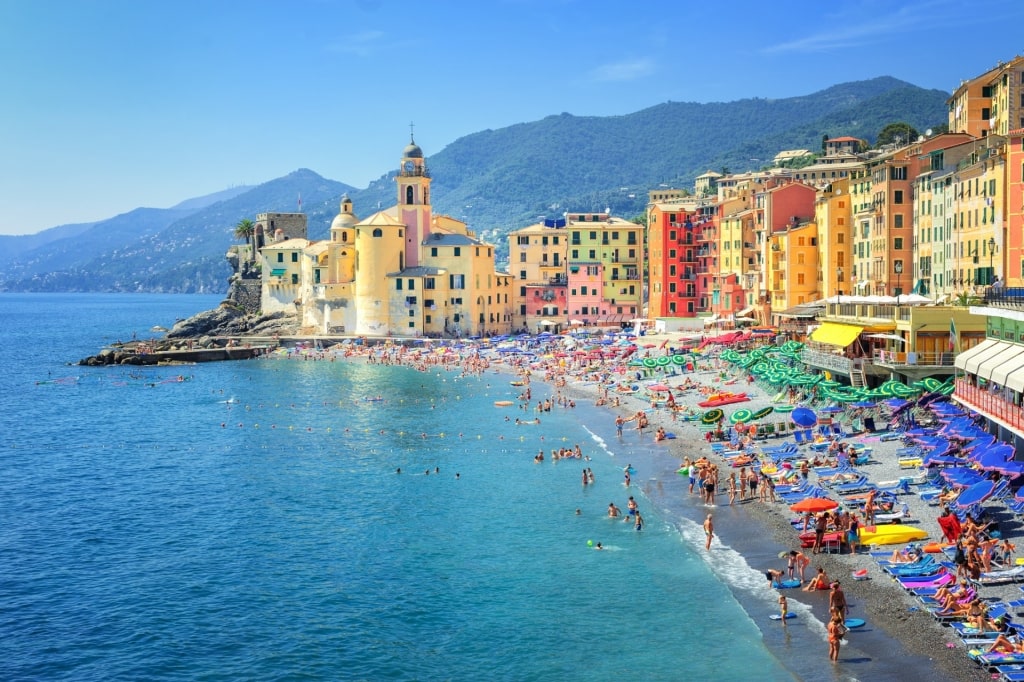
Camogli
While a case can be made for visiting any corner of Liguria, the region has several stand-out pockets.
Conveniently helping you to navigate the region, Genoa is the rough center point in the region’s geographical crescent bending from France’s Cote d’Azur in the west to Tuscany in the east.
Between Genoa and Tuscany—in the so-called “Levante Riviera”—are many of the most famous destinations. A 40-minute drive east from Genoa will bring you to the Portofino Promontory, where you’ll find a cluster of wonderful resort towns including Santa Margherita, Rapallo, Camogli, and, of course, Portofino.
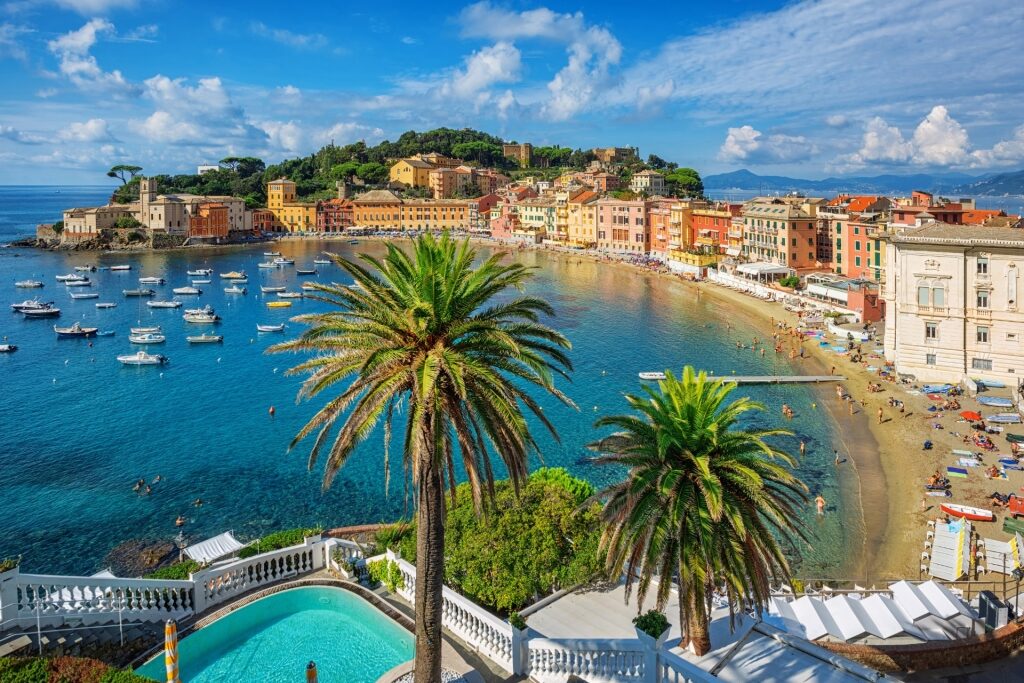
Bay of Silence, Sestri Levante
About the same distance eastwards again and you’ll arrive at Sestri Levante, known as the “city of two seas”. This handsome peninsula is gilded with a pair of beautiful back-to-back beaches including the famous Bay of Silence.
Another 40 minutes east again, and you’ve reached La Spezia. From here, unless you’re hiking the Sentiero Azzurro trail—one of the best hikes in Europe—take a boat to see the nearby Cinque Terre.
Things to Do & Attractions in Liguria, Italy
Discover Portofino
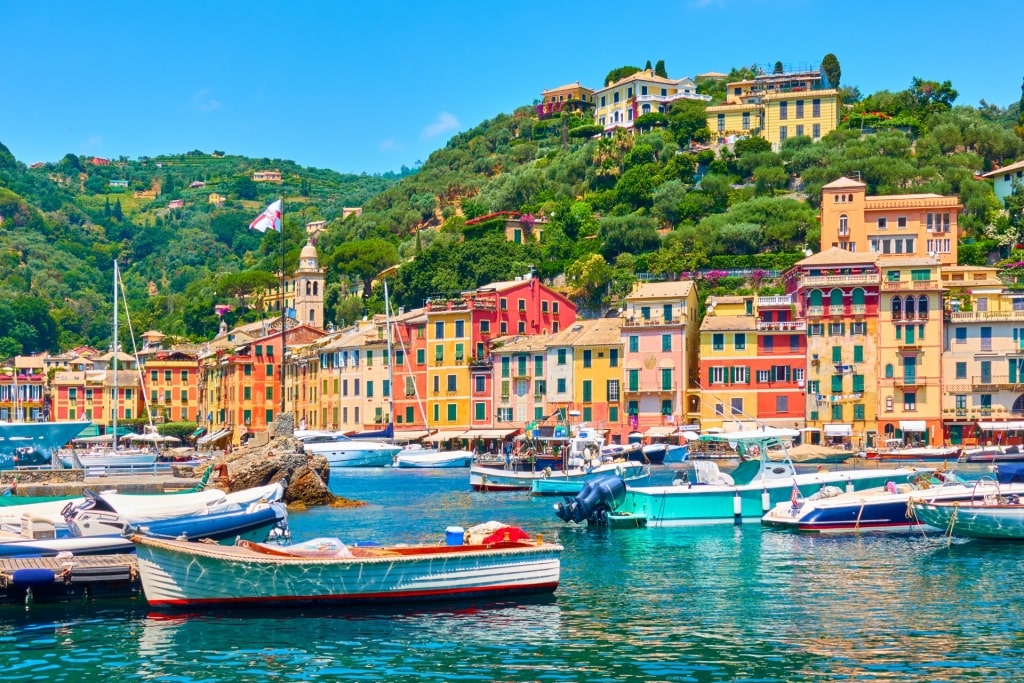
Portofino
Home to perhaps the world’s most exclusive marina, Portofino is the quintessential Ligurian fishing village.
Based on its own verdant and rugged peninsula, the village is one of Liguria’s—and Italy’s—flagship tourism destinations. In the 1960s, it was the epicenter of the jet set, an emblem of la dolce vita.
With only about 400 inhabitants, it’s a small place. And while it doesn’t take long to tick off your list of things to do in Portofino, the glance certainly lingers across its umbrella pines and bunched bouquet of houses.
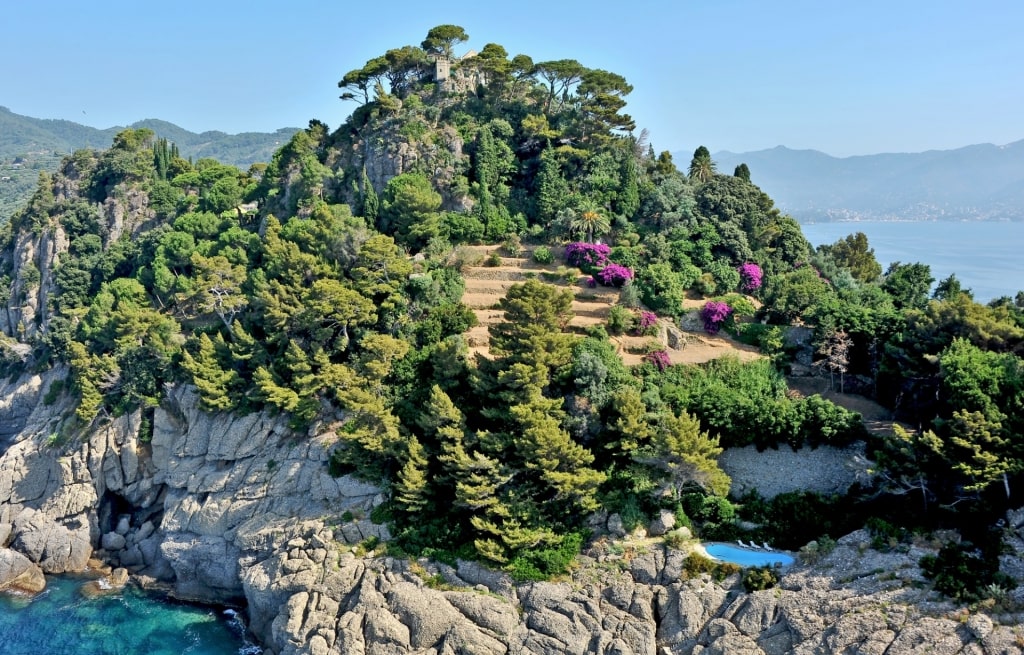
Portofino Regional Park
While most arrive by sea, it is less well known that you can hike to Portofino from Santa Margherita. The route follows an easygoing hour-long coastal walk through the verdant Portofino Regional Park.
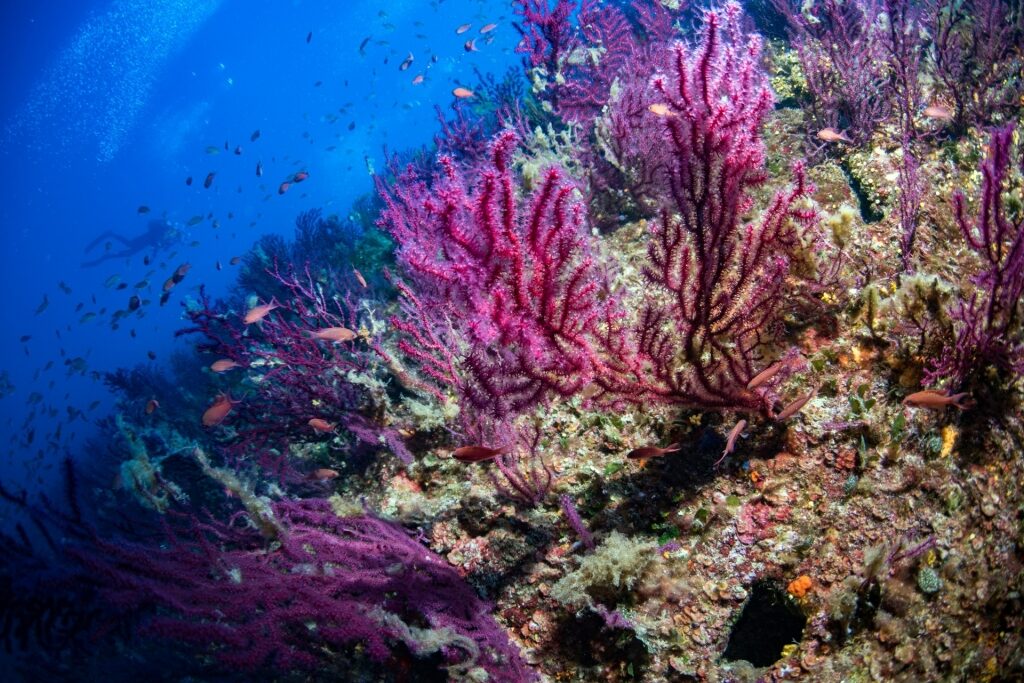
Portofino Marine Park
Out to sea, meanwhile, beneath the multi-million dollar hulls of the superyachts, the Portofino Marine Park is a hive of biodiversity. Seagrass sways in the current, and rare species await discovery by divers or snorkelers.
The Marine park has also led to Blue Flag status for its beaches. The certified clean water laps the sand of gorgeous Paraggi Bay, only 20 minutes’ walk from Portofino.
As you’d expect, immaculate beach clubs dominate this small cove. If you don’t fancy paying or squeezing into the free beach area, do as the locals do and settle on the boulders instead.
Read: Best Beaches In & Around Portofino, Italy
Walk the Gardens of Santa Margherita
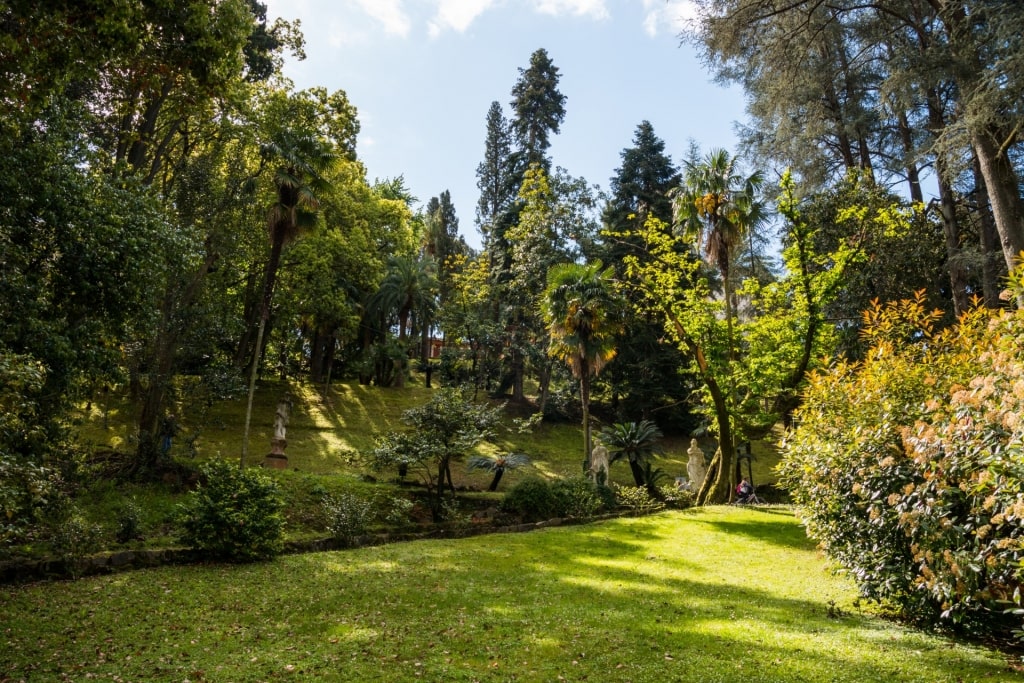
Villa Durazzo, Santa Margherita
Less well known than Portofino, but with much of the same Ligurian charm, Santa Margherita is one of the riviera’s best resort towns. Art deco hotels line the classic promenade, while palatial villas perch amid palms in its hilly hinterland.
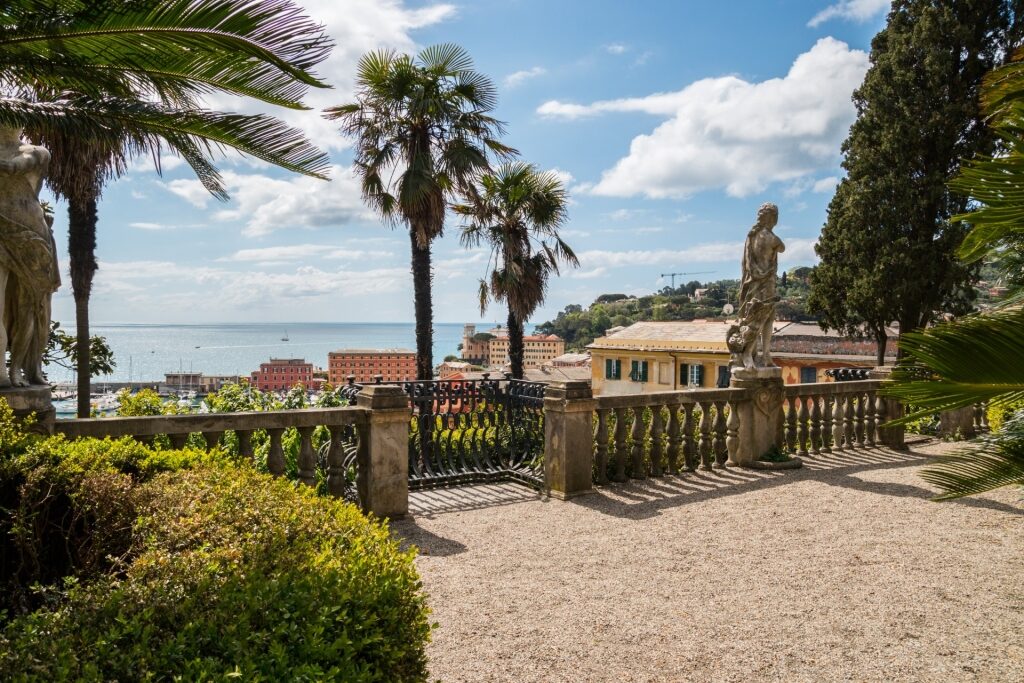
Villa Durazzo, Santa Margherita
The grandest of these is Villa Durazzo. A visit to this historic property takes in its gorgeous frescos, panoramic views over the Gulf of Tigullio, and, best of all, one of the country’s “Great Italian Gardens”.
Lose yourself—as Rod Stewart and Penny Lancaster surely did when they tied the knot here—amid the camphor and cypress of the Romantic English Wood. Or discover the serenity of its Italian garden, sniffing pouting camellias before finding the café and a reviving espresso.
Explore Cinque Terre & Porto Venere
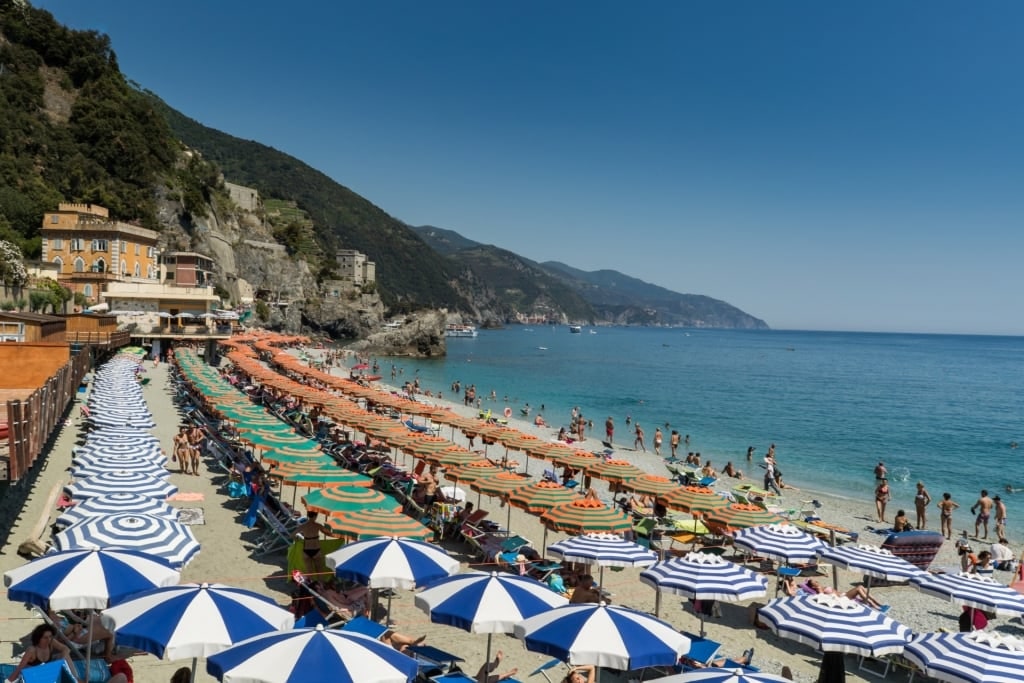
Monterosso
Another of Liguria’s headline destinations is the Cinque Terre. These five remote towns of Cinque Terre—Monterosso, Manarola, Riomaggiore, Vernazza, and Corniglia—are each embedded into the craggy coastline, their cascading architecture luminous in ochre, terracotta, and lemon pastels.
Eating cones of fried seafood while strolling along their bijou waterfronts is a must while in Liguria. The seaside villages are linked by ancient mule routes, and it’s also possible to hike between them following the trails snaking through the lemon groves and tiny vineyards in the terraced hills.
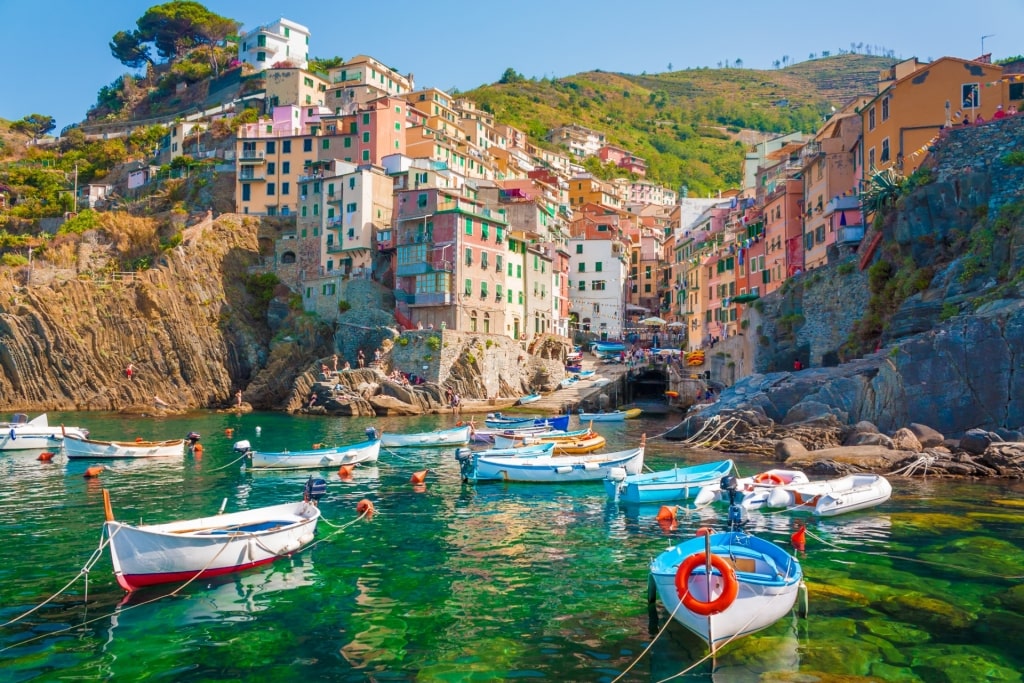
Riomaggiore, Cinque Terre
A further eight-mile hiking trail connects Riomaggiore, the southernmost of the Cinque Terre, to UNESCO-listed Porto Venere. Often referred to as the “sixth Cinque Terre”, Porto Venere nevertheless flies under the radar for most travelers.
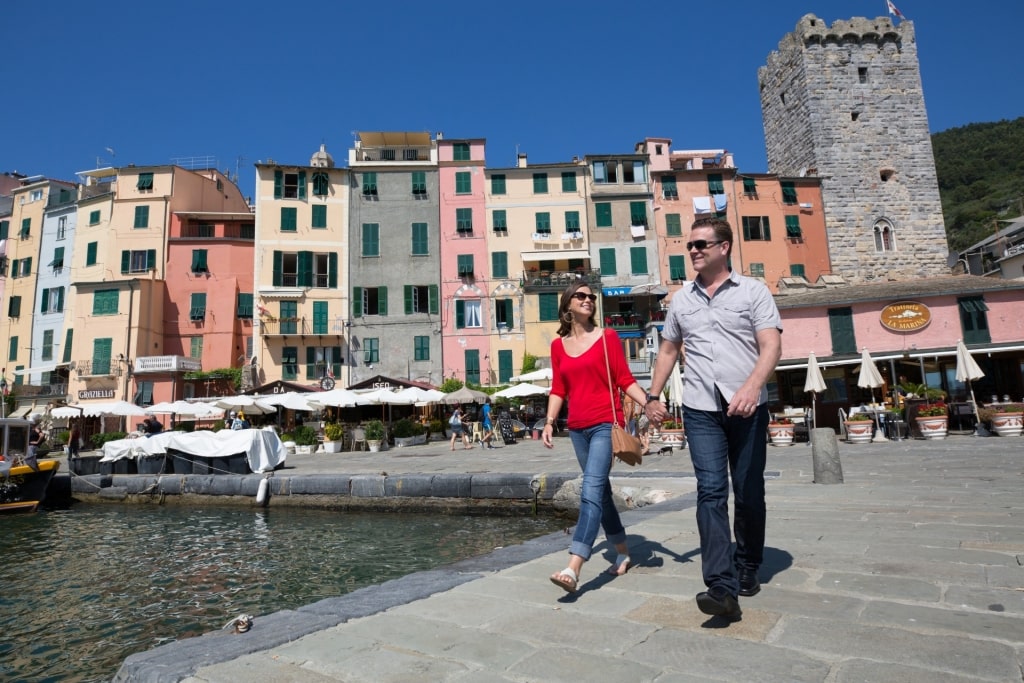
Porto Venere
That would have suited the romantic poet Lord Byron, who found Porto Venere, with its pretty quayside and imposing castle, just the right balance of sun and shade to inspire his verses.
Find his “Byron’s Grotto” sea cave (where he would reportedly write) near St. Peter’s Church on the promenade, with steps leading down from it into the sparkling sea.
Read: Best Things to Do in Cinque Terre
See Genoa’s Medieval Magnificence
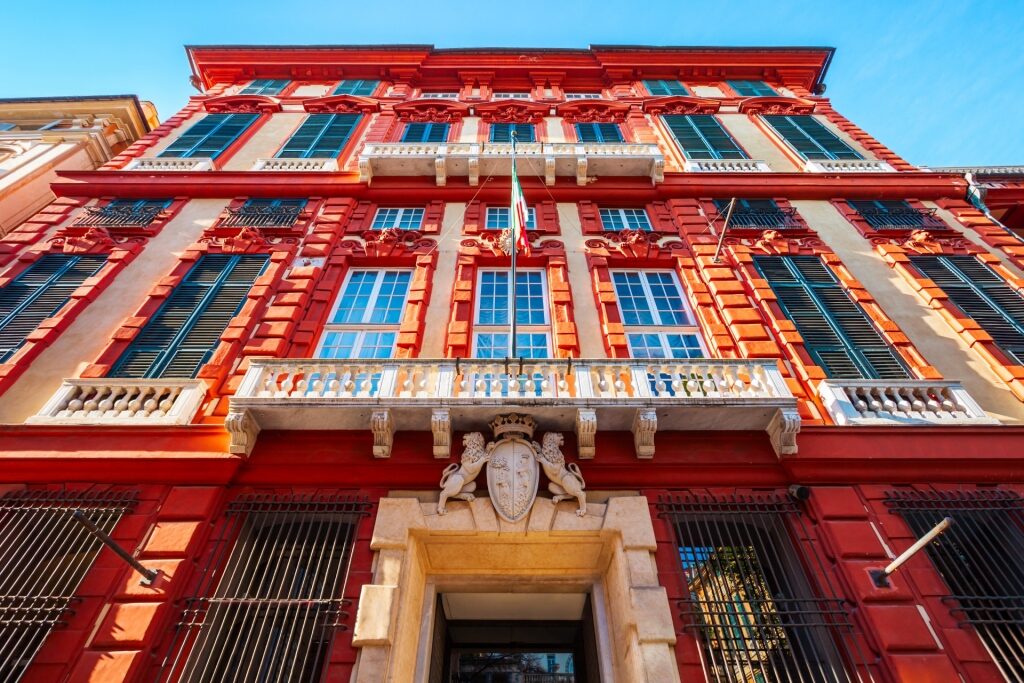
Rosso Palace
The capital of Liguria, Genoa has a long and storied history. During its centuries as one of the wealthiest maritime powers in the Mediterranean, the families that controlled Genoa constructed stunning palaces throughout the city.
Today, there are over 150 of these stunning Renaissance buildings remaining, with most repurposed for modern life: some are enviable apartment blocks, others overly ornate police stations.
Three weekends a year, all of the 42 UNESCO-protected “Rolli” palaces open their doors to the public, allowing you to explore Genoa’s heritage in a unique way.
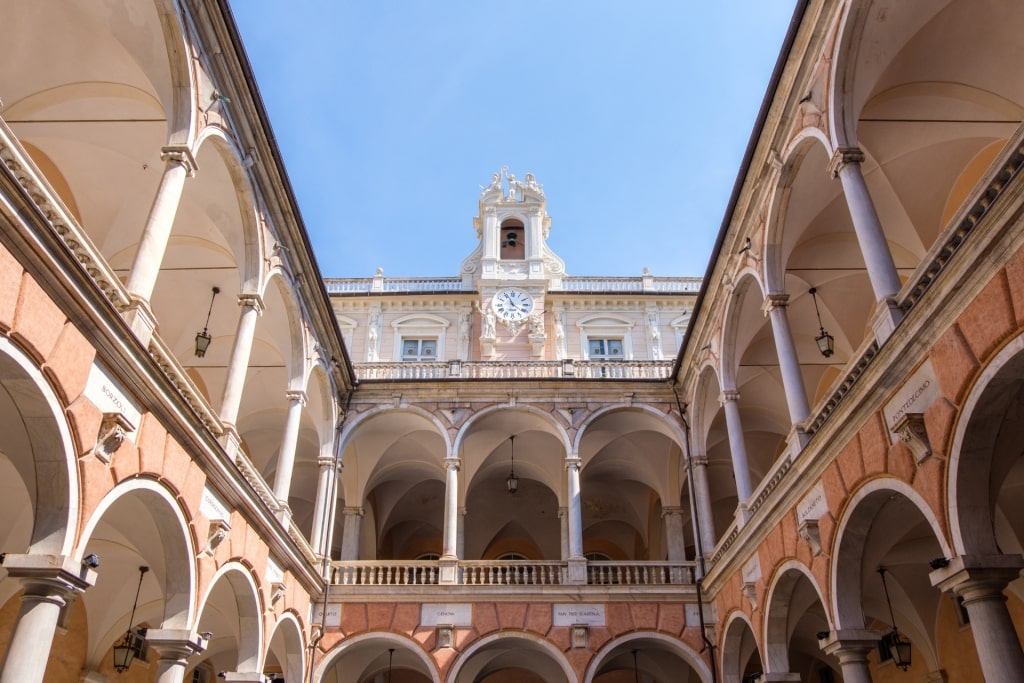
Tursi Palace
If your plans don’t line up with these “Rolli weekends”, there are a handful of palazzi, Rosso, Bianco, and Tursi, that offer you a way to experience the grandeur. Rosso and Bianco are art museums, while Tursi is the town hall.
This trio of magnificently frescoed and stuccoed edifices is found on via Garibaldi, one of the grandest arteries of Genoa’s UNESCO-protected medieval center.

Cappuccino
After the luminosity of the palazzi, descend into the historic center’s mishmash of flagstoned lanes. Sip cappuccinos in atmospheric, café-jammed piazzas, and nibble tasters at historic food stores such as Antico Forno Patrone, the smells of fresh-baked focaccia from this century-old bakery lingering in the street.
Read: Best Beaches in & Around Genoa, Italy
Discover La Spezia’s Military Heritage
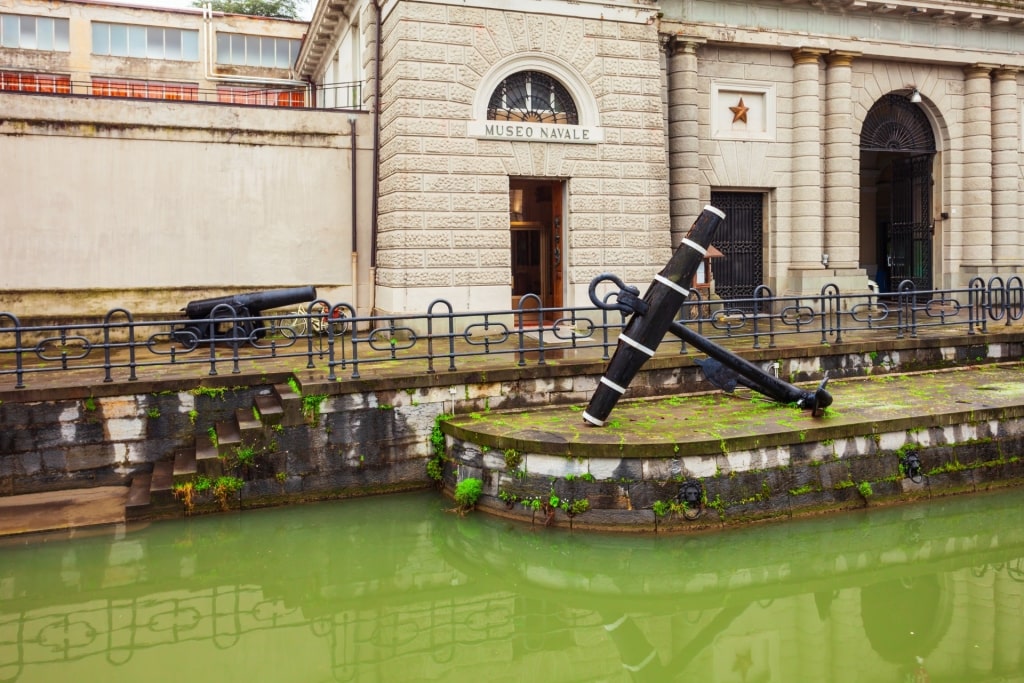
Technical Naval Museum, La Spezia
La Spezia, found in Liguria’s east, is the black sheep of the region’s cities. Its deepwater harbor ensured that it became one of the Italian Navy’s main bases. The city is also the major departure point for waterborne trips to the glorious Cinque Terre.
For lovers of military history, however, La Spezia is Liguria’s true star. Its Technical Naval Museum may have a dry-sounding name, but the exhibits are anything but. One of the largest exhibits focuses on the Italian Special Forces, stationed in La Spezia, and their specialist equipment.
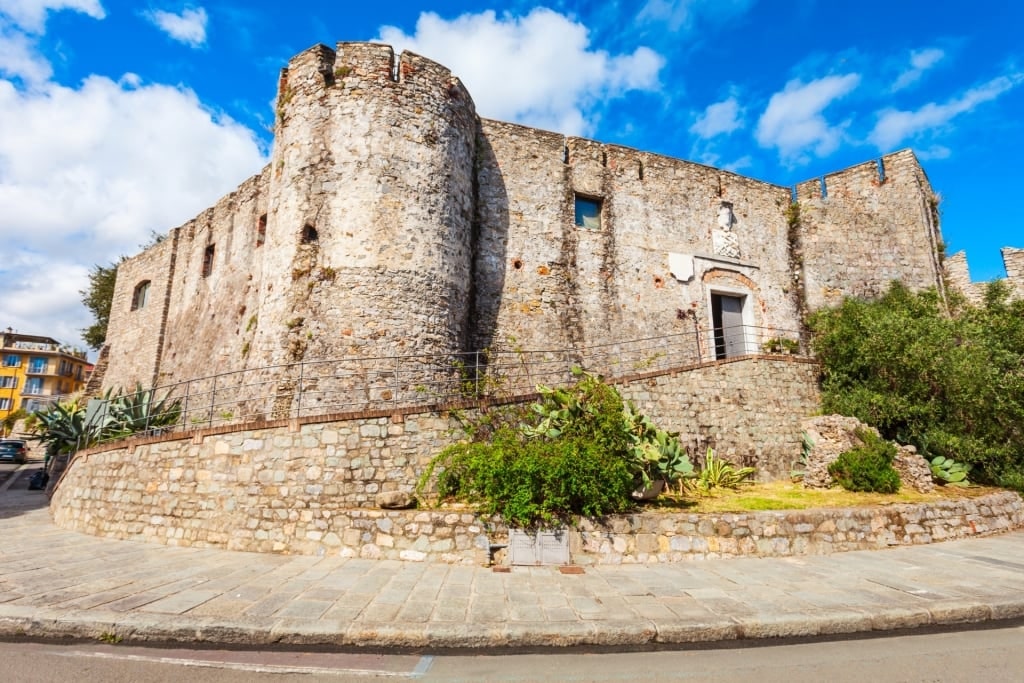
Castello di San Giorgio
For lovers of medieval history, you’ll find within the world’s most extensive collection of antique ship figureheads. To dive deeper into the city’s past, visit the beautiful Italian castle of San Giorgio located on the hill above the city.
Within its stout 14th-century walls you’ll find an Archaeological Museum with insights into Roman-era life.
Bask on the Beaches
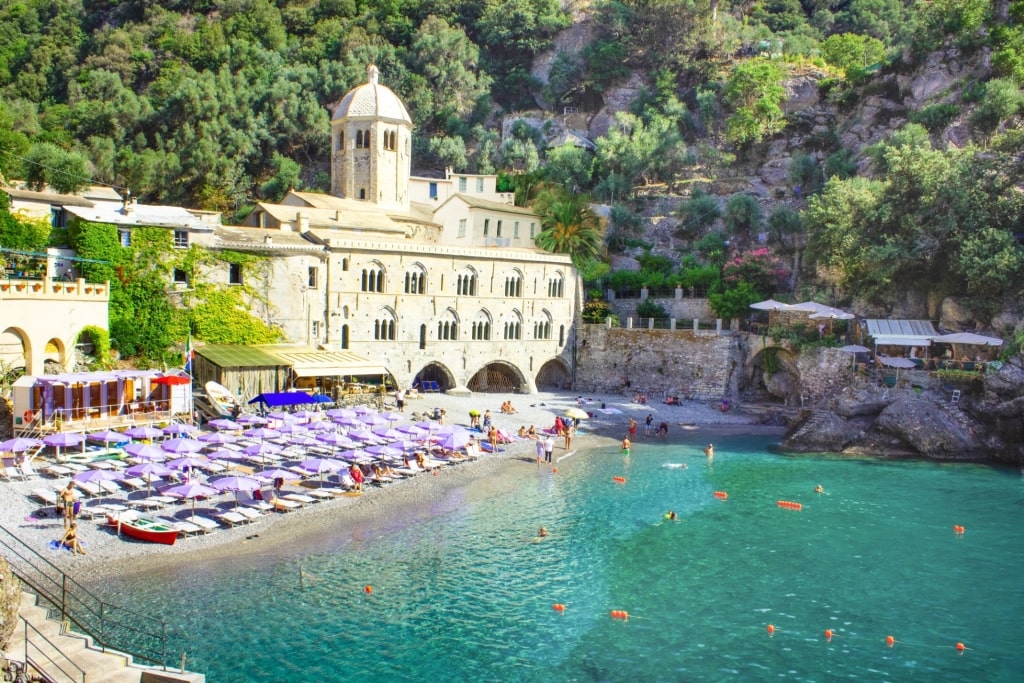
San Fruttuoso Bay
With the Ligurians throwing open their forest-green shutters to a steady 300 days of sunshine per annum, the region’s many Italian beaches are often at the forefront of the mind.
The variety of beach experiences in Liguria is impressive. And wherever you choose to spend your basking time along this blissful edge of Europe, be sure to inquire with a local Ligurian for a beach tip.
However, some better-known spots do insist on being visited. San Fruttuoso Bay, accessible by boat or a strenuous hike, is one of those.
A tiny pebble beach in front of an elegant 10th-century monastery, the atmosphere in this cut-off spot offers a rare mix describable only as “monastic-glam”. Little wonder Madonna is rumored to make an annual pilgrimage.
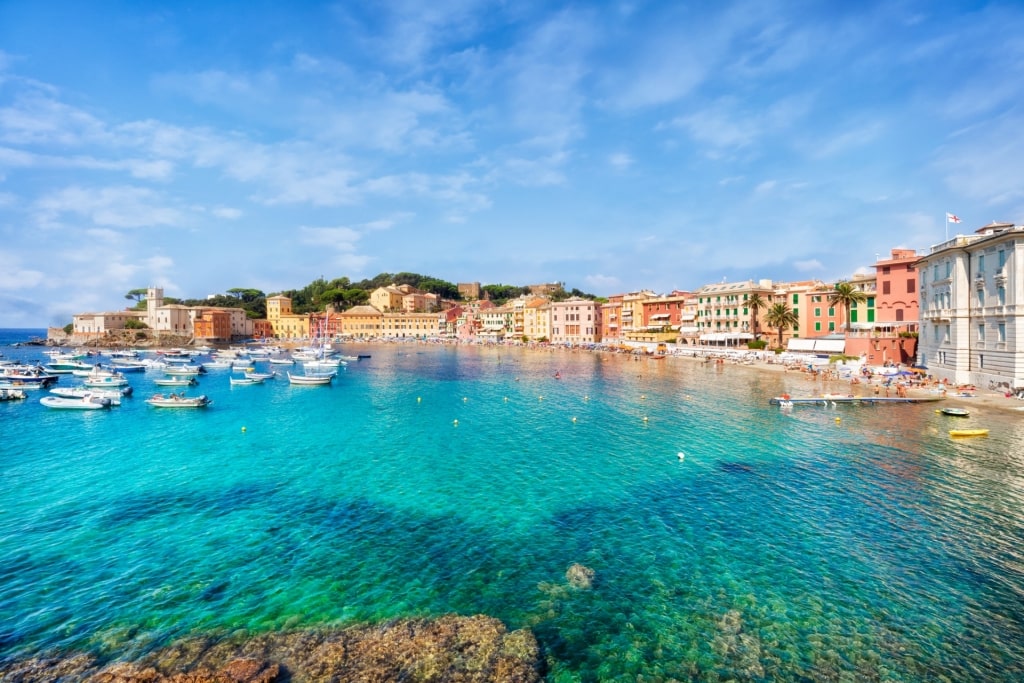
Bay of Silence, Sestri Levante
Sestri Levante’s “Bay of Silence”, just east of Rapallo, has been voted by Italians as one of the country’s top ten beaches. Besides its elegant sweep and brightly painted gozzi boats hauled up on the soft sand, this beach is also—rare for this part of Liguria—free of private clubs.
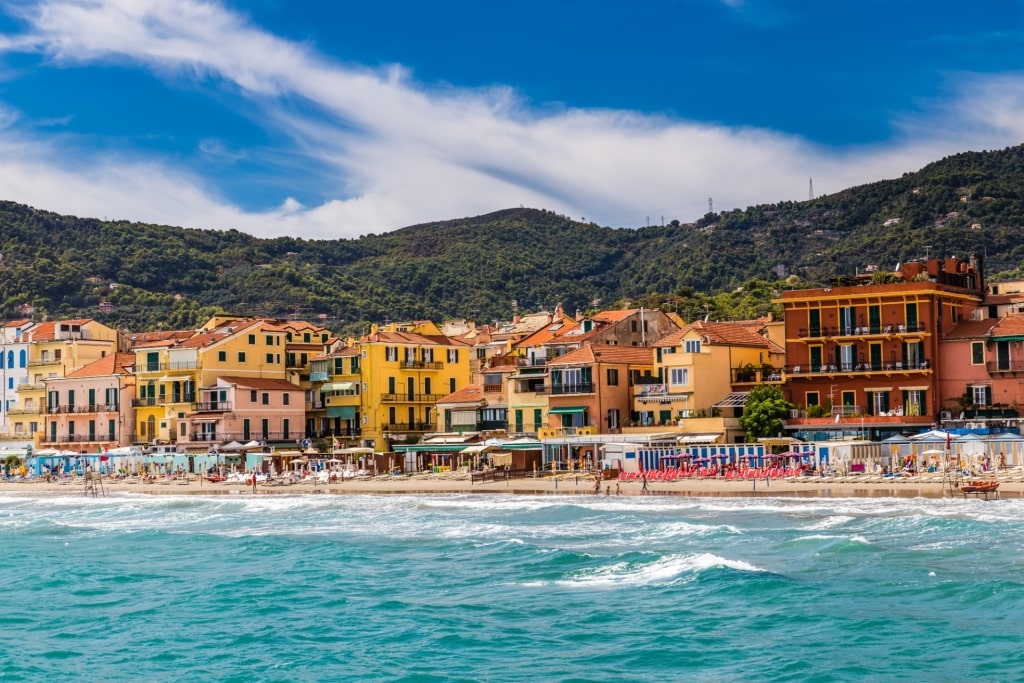
Alassio
Travel west along the SS1 coastal highway and you’ll arrive at seafront Alassio. One of the riviera’s longest and loveliest stretches of sand, this resort town is also famous for its fun vibe at aperitivo hour as well as its chocolate Baci di Alassio macarons, best procured from the town’s belle epoque Balzola pasticceria).
Food & Drink
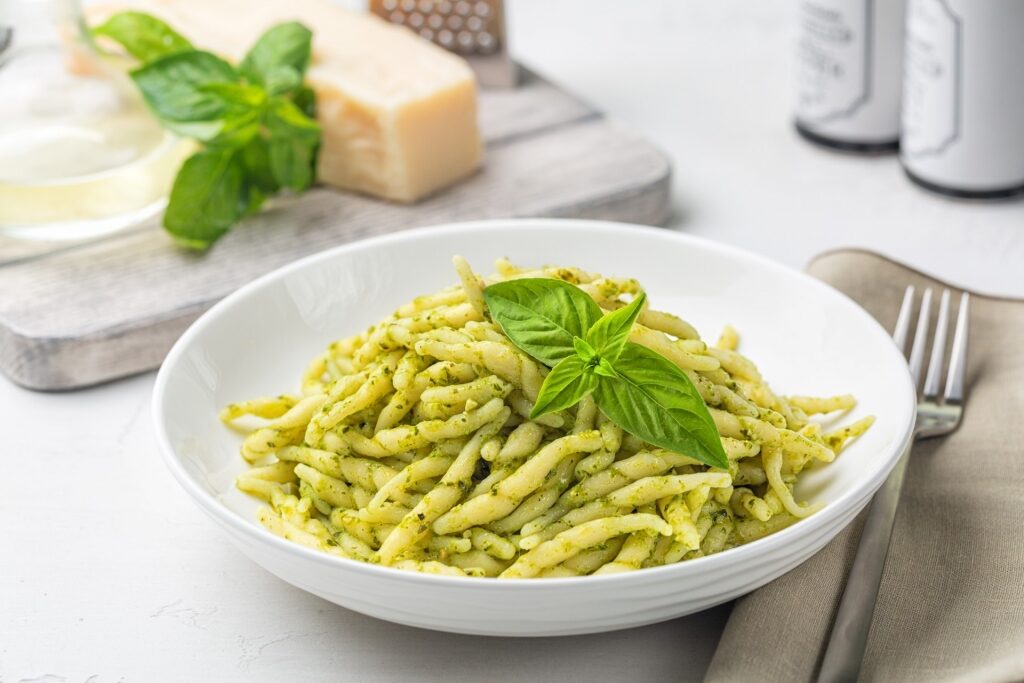
Pesto
With a coastline approximately 250 miles long, Ligurians have a high proportion of seafood in their diets.
Expect imaginative cuisine such as swordfish and leeks with pistachio and lemon, although with Piedmont to the north, carnivores can usually find some Fassone steak, often wrapped in truffle, available as well.
The region is the origin of several headline Italian foodstuffs: pesto, focaccia, and, according to some, minestrone soup.
There’s a pesto world championship held annually in Genoa, where nonnas with steely grips on their pestles grind the famously flavor-packed local basil into a vivid green paste before it’s mixed with the regional trofie pasta.

Focaccia
The city’s preferred style of focaccia has caramelized onions, although you’ll find local takes the length of the Riviera.
Minestrone has its roots in the Roman era, and claims are made, mostly by Ligurians, that the soup hails from their province.
There’s a tale that Roman soldiers used to use their helmets as a pan to cook soup while on the march. Minestrone alla Genovese is the regional variation, with the fragrant addition of pesto.
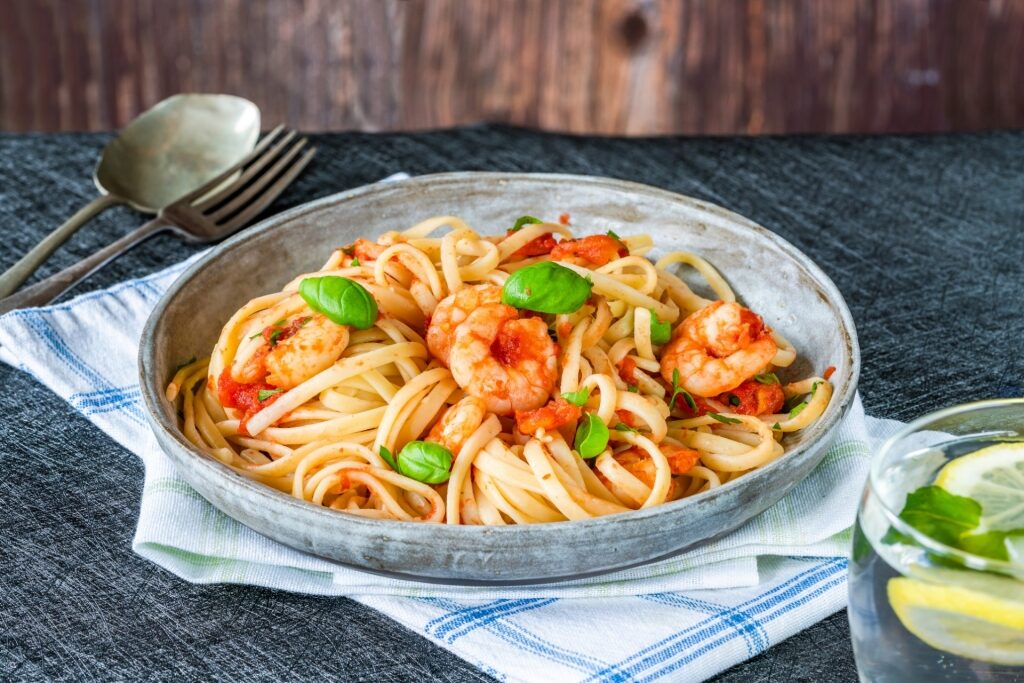
Shrimp linguine
Fans of shrimp dishes should travel to Santa Margherita. The local red shrimp are huge and juicy, and if you can’t make it to the town, you should find them served on the region’s better menus. The shrimps with a more violet-blue hue are the most sought-after for their flavor.

Wine
Tossed in linguine, the flavor of the shrimps sing when paired with a straw-yellow glass of Cinque Terre DOC wine.
With a relatively minuscule production gleaned from the blend of Vermentino, Bosco, and Albarola grapes growing on the Roman-era terroir above the Cinque Terre, Liguria is one of the few places you can enjoy this wine’s unique freshness.

Genoise sponge cake
The Cinque Terre winemakers also created sciacchetrà. Pair this with a dessert based on homegrown Genoise sponge. Ligurian sacripantina cake with its three layers of liqueur-soaked sponge might be just the ticket.
Best Time to Visit Liguria
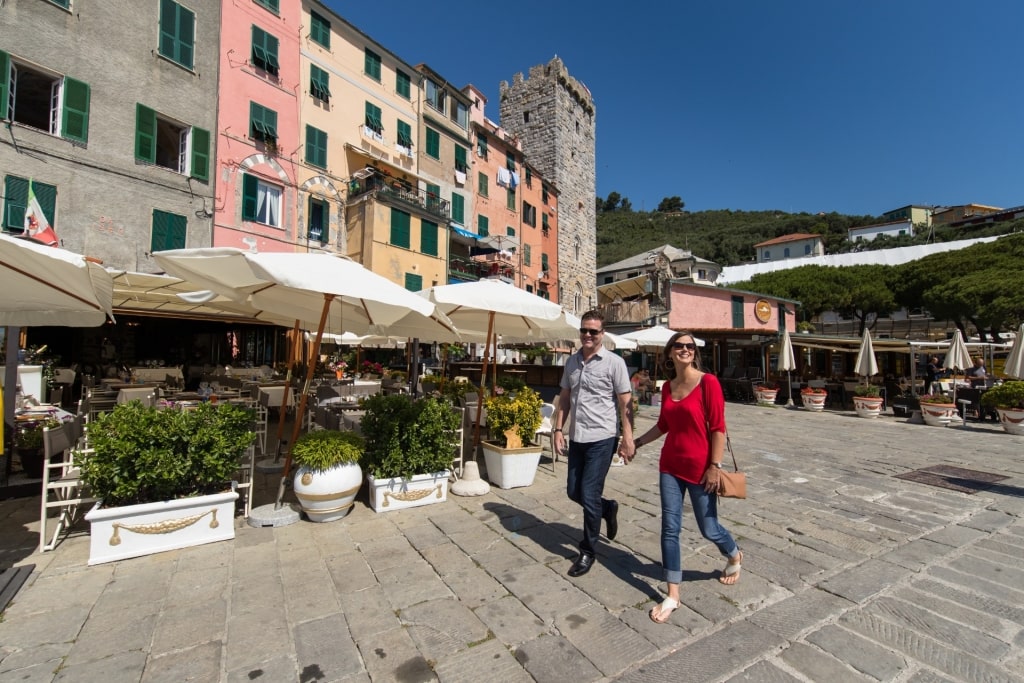
Porto Venere
Looking south over the Mediterranean, the Ligurians find the warm sun on their faces for an average 300 days a year.
To their backs, meanwhile, the Apennines and the Ligurian Alps protect the region from severe weather, although the odd rain shower can happen any time outside of high summer in Italy.
May is a lovely month in which to visit, with the bougainvillea and window box marigolds in fragrant bloom, and temperatures rising to a pleasant average of 68°F. By high season, across July and August, the mercury has risen to a balmy 80°F as jet skis carve up the Gulf of Tigullio.
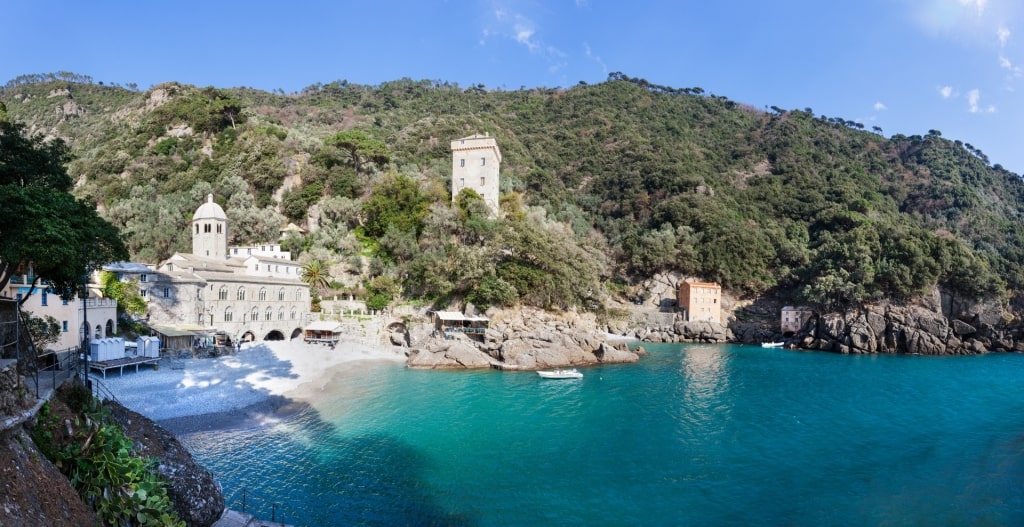
San Fruttuoso
The later shoulder season is also extremely inviting and September sees highs of 77°F. At this time, the truffle hunters, still in their shorts, begin to take their dogs into the woods to sniff out buried treasure.
It’s also an excellent time of year to hike to San Fruttuoso or Porto Venere, with refreshing breezes off of the azure Ligurian sea.
Read: Classic Cities and Towns in the Italian Riviera
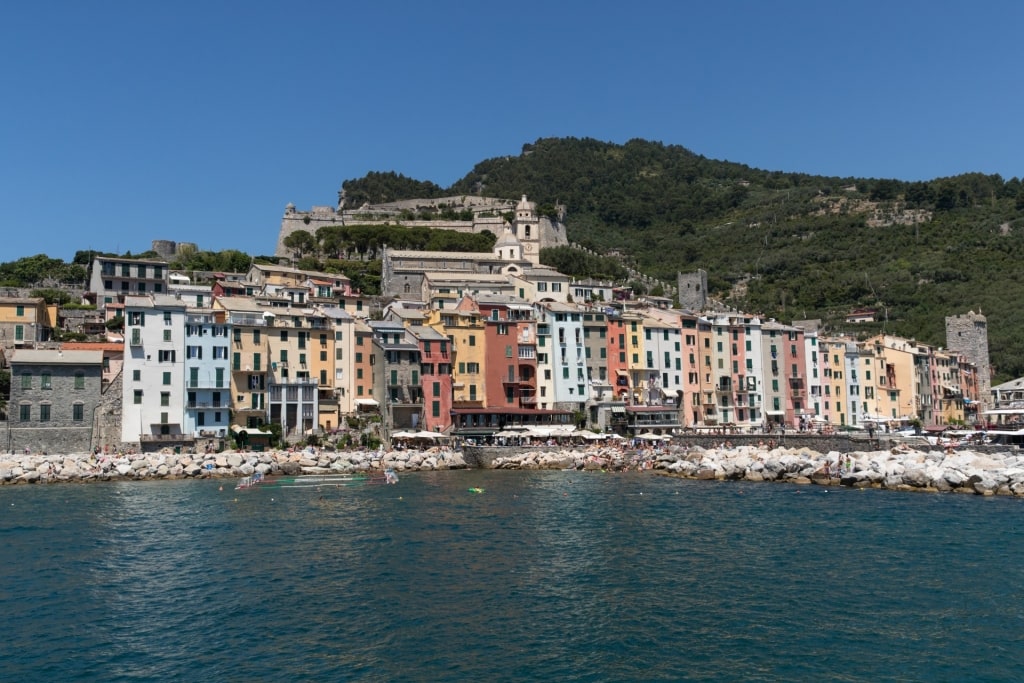
Porto Venere
Discover Liguria, Italy, on a cruise with Celebrity. Browse our Italy cruises online and book a sun-splashed vacation on the Italian Riviera.



